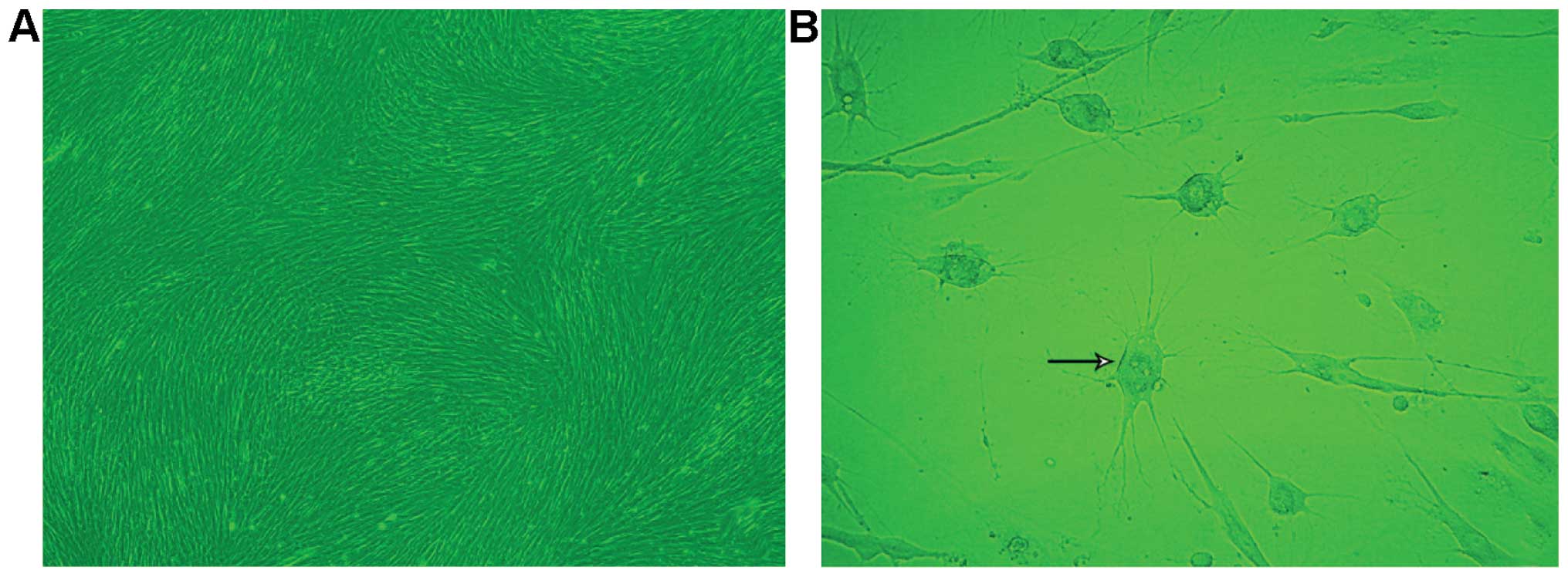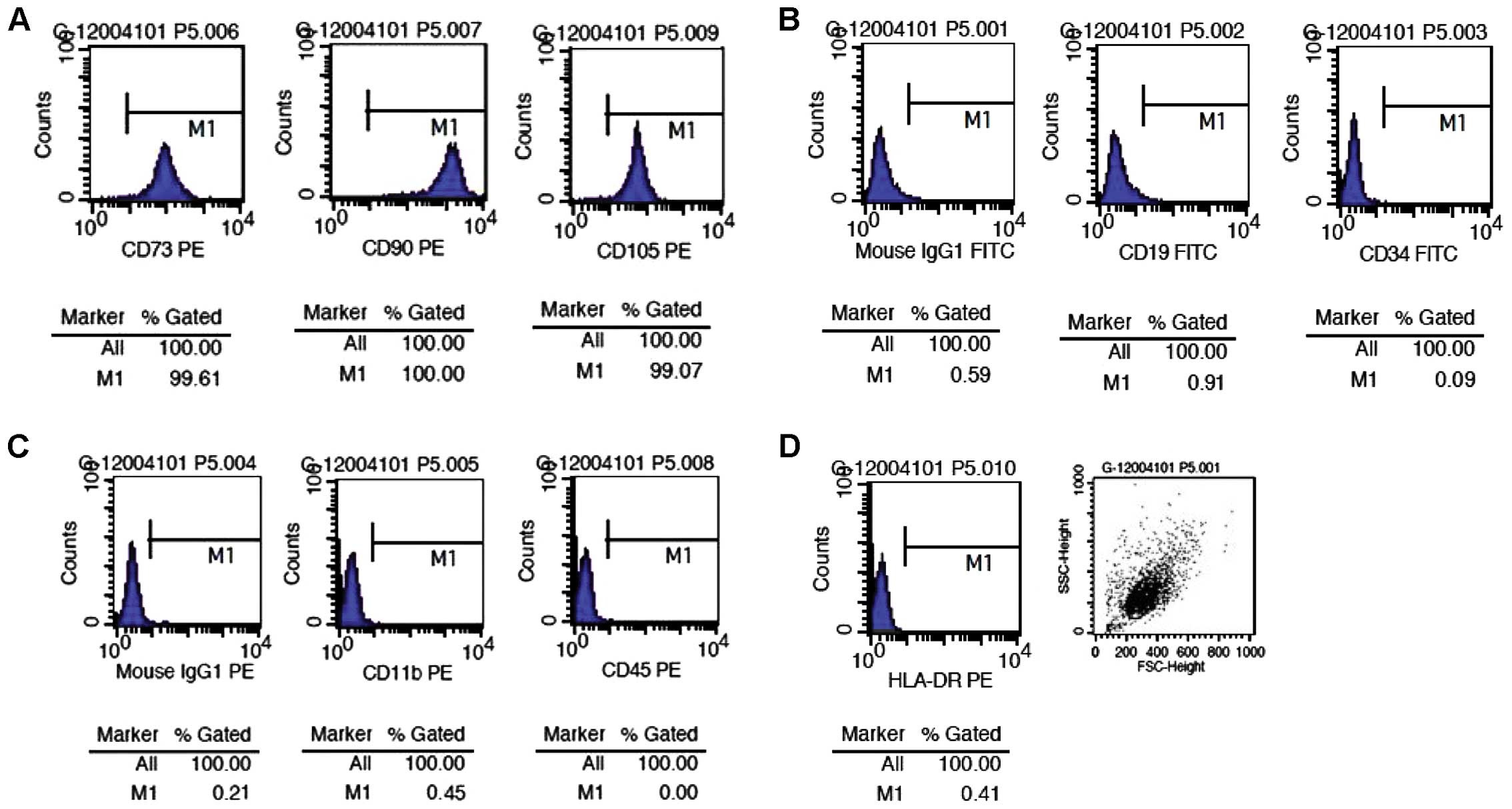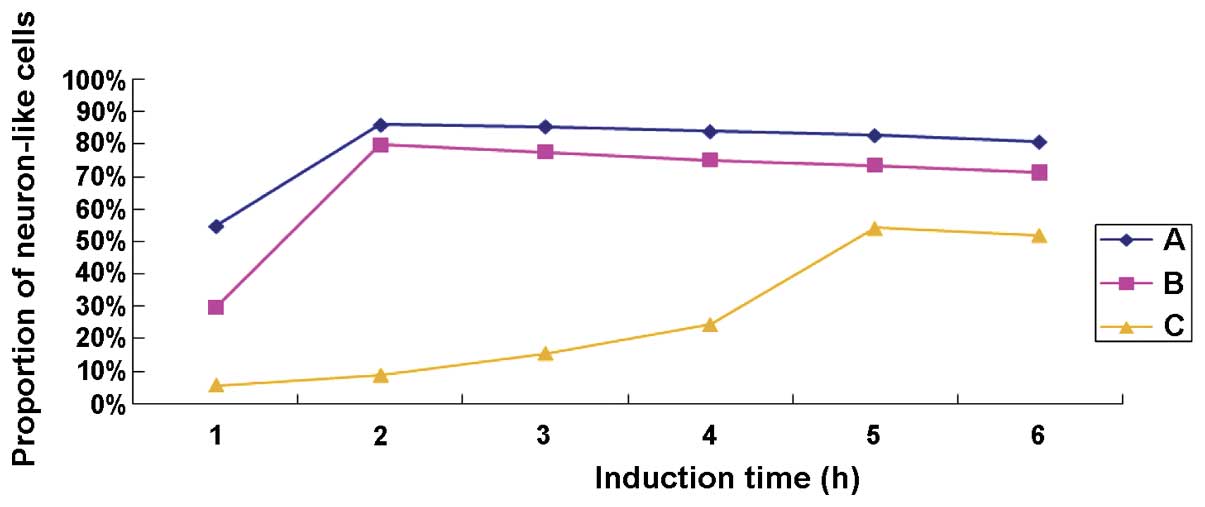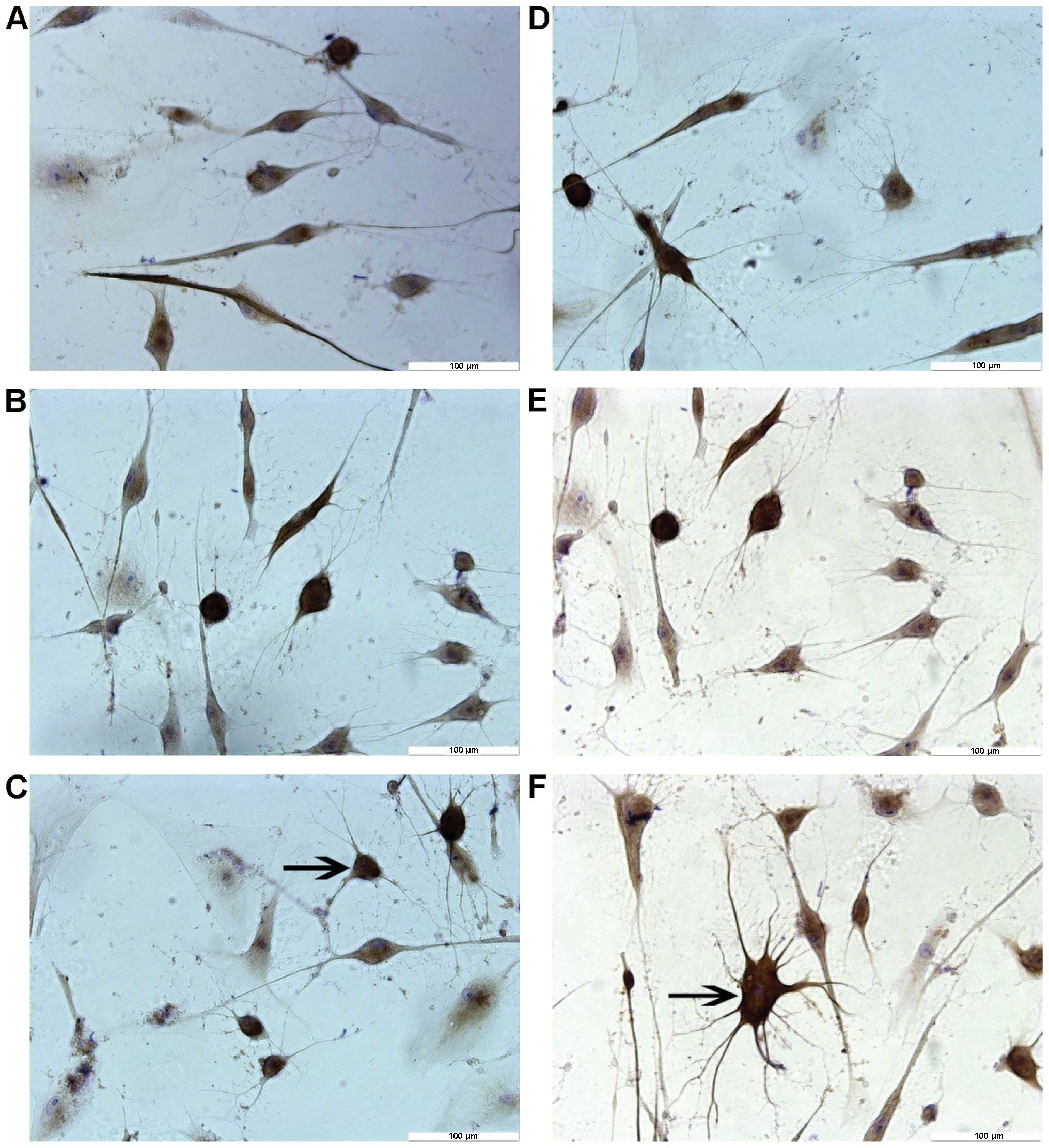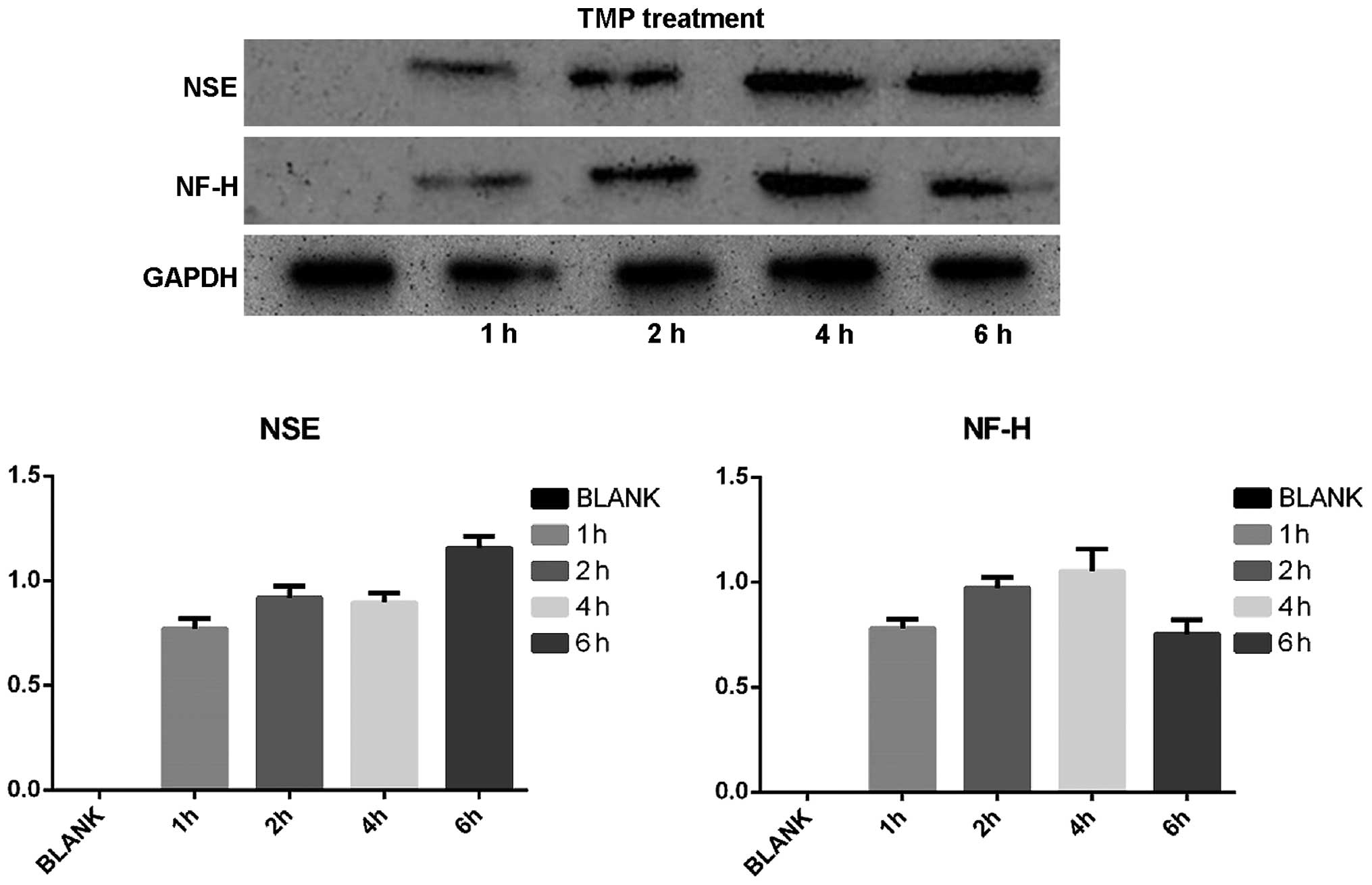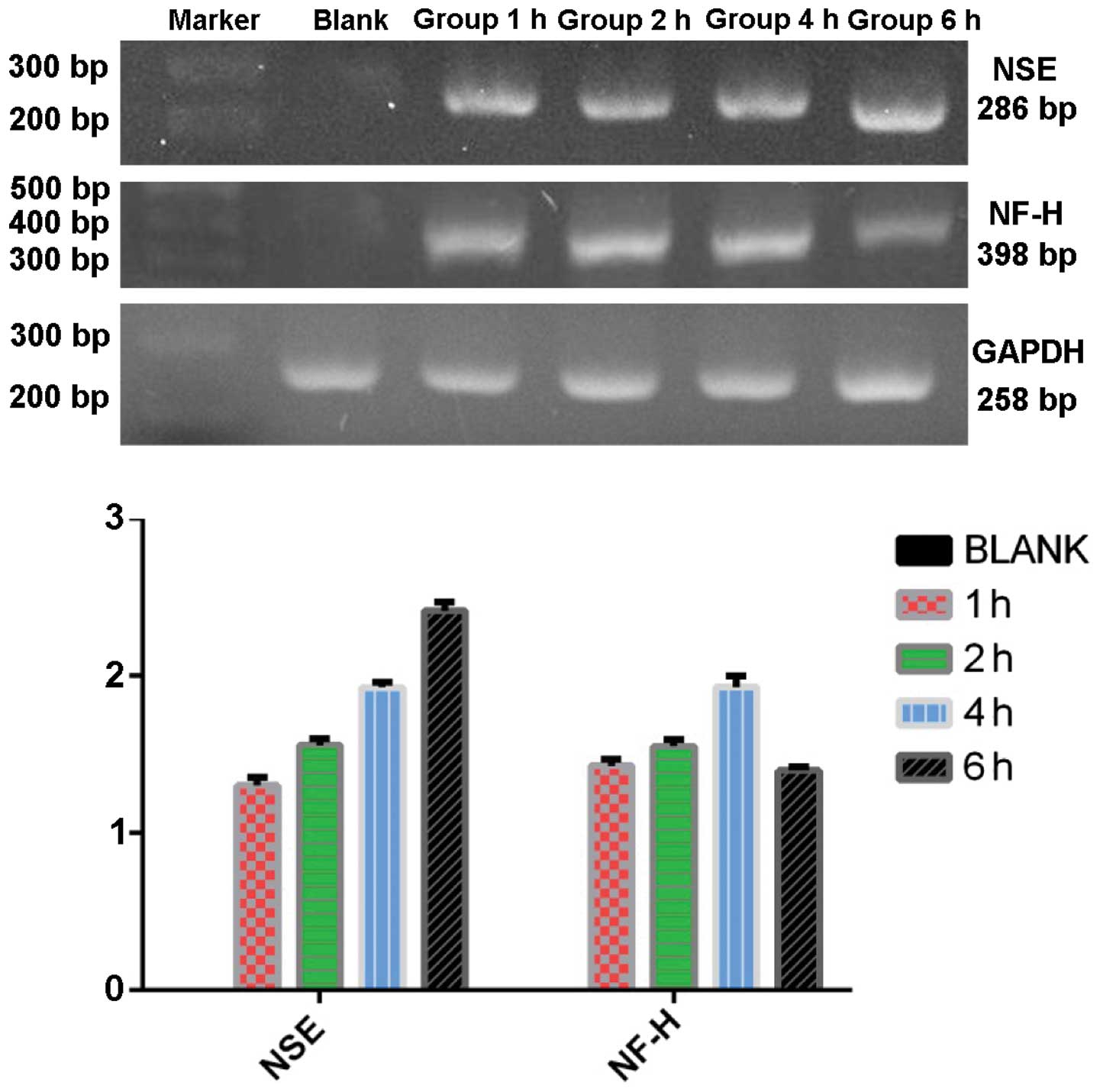|
1
|
McElreavey KD, Irvine AI, Ennis KT and
McLean WH: Isolation, culture and characterisation of
fibroblast-like cells derived from the Wharton's jelly portion of
humanumbilical cord. Biochem Soc Trans. 19:29S1991. View Article : Google Scholar
|
|
2
|
Woodbury D, Schwarz EJ, Prockop DJ and
Black IB: Adult rat and human bone marrow stromal cells
differentiate into neurons. J Neurosci Res. 61:364–370. 2000.
View Article : Google Scholar : PubMed/NCBI
|
|
3
|
Li SH and Guo PD: Research progress about
traditional Chinese medicine (TCM) inducing bone marrow mesenchymal
stem cells to differentiate into neural cell. Gansu J Tradit Chin
Med. 22:68–69. 2009.
|
|
4
|
Liu YX and Gao JZ: Clinical observation of
tetramethylpyrazine early treatment of acute craniocerebral injury.
Chin J Clin Neurosurg. 12:754–755. 2007.(In Chinese).
|
|
5
|
Li YQ and Lan TM: Research progress about
tetramethylpyrazine in the pharmacokinetics of the nervous system
and clinical application. Seek Med Ask The Med. 9:3342011.(In
Chinese).
|
|
6
|
Xin ZC, Wang L, Lin GT, et al: The markers
and tracer marker of mesenchymal stem cells. J Peking Univ.
45:514–517. 2013.(In Chinese).
|
|
7
|
Verfaillie C: Stem cell plasticity.
Hematology. 10(Suppl 1): 293–296. 2005. View Article : Google Scholar : PubMed/NCBI
|
|
8
|
Filip S, Mokrý J, English D and Vojácek J:
Stem cell plasticity and issues of stem cell therapy. Folia Biol
(Praha). 51:180–187. 2005.
|
|
9
|
Friedman MS, Long MW and Hankenson KD:
Osteogenic differentiation of human mesenchymal stem cells is
regulated by bone morphogenetic protein-6. J Cell Biochem.
98:538–554. 2006. View Article : Google Scholar
|
|
10
|
Wang T, Xu Z, Jiang W and Ma A:
Cell-to-cell contact induces mesenchymal stem cell to differentiate
into cardiomyocyte and smooth muscle cell. Int J Cardiol.
109:74–81. 2006. View Article : Google Scholar
|
|
11
|
Moscoso I, Centeno A, López E,
Rodriguez-Barbosa JI, Santamarina I, Filgueira P, Sánchez MJ,
Domínguez-Perles R, Peñuelas-Rivas G and Domenech N:
Differentiation ‘in vitro’ of primary and immortalized porcine
mesenchymal stem cells into cardiomyocytes for cell
transplantation. Transplant Proc. 37:481–482. 2005. View Article : Google Scholar : PubMed/NCBI
|
|
12
|
Chen LB, Jiang XB and Yang L:
Differentiation of rat marrow mesenchymal stem cells into
pancreatic islet beta-cells. World J Gastroenterol. 10:3016–3020.
2004. View Article : Google Scholar : PubMed/NCBI
|
|
13
|
Gang EJ, Jeong JA, Hong SH, Hwang SH, Kim
SW, Yang IH, Ahn C, Han H and Kim H: Skeletal myogenic
differentiation of mesenchymal stem cells isolated from human
umbilical cord blood. Stem Cells. 22:617–624. 2004. View Article : Google Scholar : PubMed/NCBI
|
|
14
|
Xu W, Zhang X, Qian H, Zhu W, Sun X, Hu J,
Zhou H and Chen Y: Mesenchymal stem cells from adult human bone
marrow differentiate into a cardiomyocyte phenotype in vitro. Exp
Biol Med (Maywood). 229:623–631. 2004.
|
|
15
|
de la Fuente R, Abad JL, García-Castro J,
Fernández-Miguel G, Petriz J, Rubio D, Vicario-Abejón C, Guillén P,
González MA and Bernad A: Dedifferentiated adult articular
chondrocytes: a population of human multipotent primitive cells.
Exp Cell Res. 297:313–328. 2004. View Article : Google Scholar : PubMed/NCBI
|
|
16
|
Bosnakovski D, Mizuno M, Kim G, Ishiguro
T, Okumura M, Iwanaga T, Kadosawa T and Fujinaga T: Chondrogenic
differentiation of bovine bone marrow mesenchymal stem cells in
pellet cultural system. Exp Hematol. 32:502–509. 2004. View Article : Google Scholar : PubMed/NCBI
|
|
17
|
Bhagavati S and Xu W: Isolation and
enrichment of skeletal muscle progenitor cells from mouse bone
marrow. Biochem Biophys Res Commun. 318:119–124. 2004. View Article : Google Scholar : PubMed/NCBI
|
|
18
|
Pittenger M, Vanguri P, Simonetti D and
Young R: Adult mesenchymal stem cells: Potential for muscle and
tendon regeneration and use in gene therapy. J Musculoskelet
Neuronal Interact. 2:309–320. 2002.
|
|
19
|
Sato Y, Araki H, Kato J, Nakamura K,
Kawano Y, Kobune M, Sato T, Miyanishi K, Takayama T, Takahashi M,
et al: Human mesenchymal stem cells xenografted directly to rat
liver are differentiated into human hepatocytes without fusion.
Blood. 106:756–763. 2005. View Article : Google Scholar : PubMed/NCBI
|
|
20
|
Gao LP, Cai JH, He HH, Huang LS and Fu ZH:
Determination of the equilibrium solubility and oil/water apparent
partition coefficient (P) of tetramethylpyrazine by HPLC. Strait
Pharm J. 25:24–26. 2013.
|
|
21
|
Deng W, Obrocka M, Fischer I and Prockop
DJ: In vitro differentiation of human marrow stromal cells into
early progenitors of neural cells by conditions that increase
intracellular cyclic AMP. Biochem Biophys Res Commun. 282:148–152.
2001. View Article : Google Scholar : PubMed/NCBI
|
|
22
|
Kohyama J, Abe H, Shimazaki T, Koizumi A,
Nakashima K, Gojo S, Taga T, Okano H, Hata J and Umezawa A: Brain
from bone: Efficient ‘meta-differentiation’ of marrow
stroma-derived mature osteoblasts to neurons with Noggin or a
demethylating agent. Differentiation. 68:235–244. 2001. View Article : Google Scholar
|
|
23
|
Jin K, Mao XO, Batteur S, Sun Y and
Greenberg DA: Induction of neuronal markers in bone marrow cells:
Differential effects of growth factors and patterns of
intracellular expression. Exp Neurol. 184:78–89. 2003. View Article : Google Scholar : PubMed/NCBI
|
|
24
|
Yuan Y, Yang SY, Han ZC, et al:
Amplification and differentiation towards neuron-like cells of
human umbilical cord derived mesenchymal stem cells. Chin J
Neuromed. 5:230–236. 2006.
|
|
25
|
Sun WX and An HM: The mechanism research
concerning protective effects of traditional chinese medicine on
nerve system injury caused by oxidative stress. Chin J Chin Med.
4:561–564. 2015.(In Chinese).
|
|
26
|
Liu YY, Zhao XX, Zhao HB, Ge BF, Liu XY
and Chen KM: Tetramethylpyrazine induces the differentiation of
mouse bone marrow-derived mesenchymal stem cells into nerve cells
mediated by Ca2+ signaling. J Gansu Agric Univ. 45:1–5.
2010.
|
|
27
|
Zhao CH, Fang BJ, Han Q, et al: Study
about biological property of pluripotent stem cells and
transplantation application. J Chin Microcirc. 8:3452004.
|
|
28
|
Lu P, Blesch A and Tuszynski MH: Induction
of bone marrow stromal cells to neurons: Differentiation,
transdifferentiation, or artifact? J Neurosci Res. 77:174–191.
2004. View Article : Google Scholar : PubMed/NCBI
|















